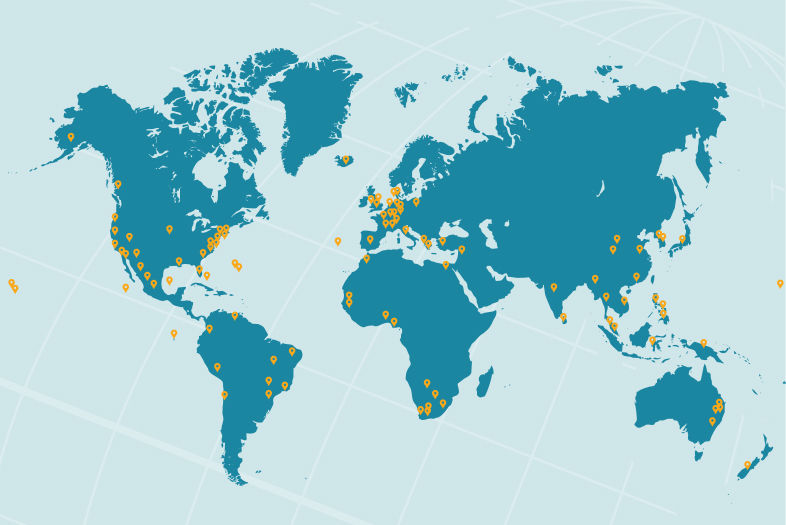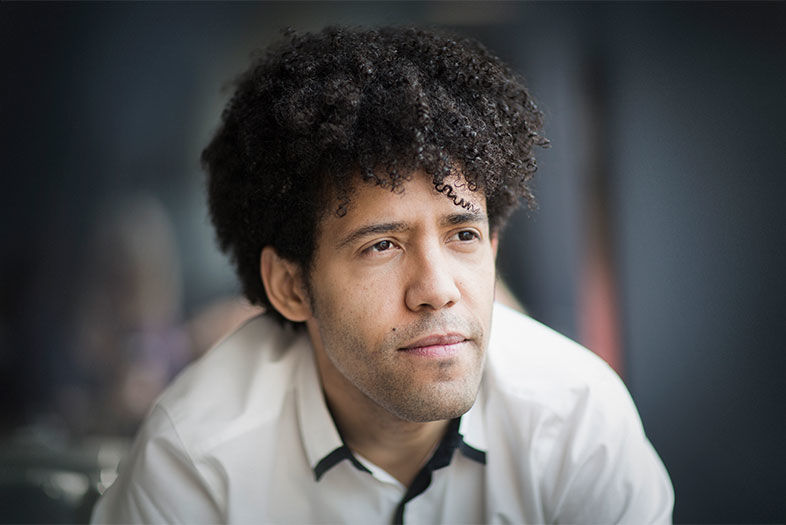
Meet the Globetrotters and Expats Shaping San Diego
Photo by Benjamin Ealovega
Rafael Payare
Music Director Designate, San Diego Symphony
Birthplace: Puerto La Cruz, Venezuela
Lives in: San Diego and Berlin
Age: 38
Rafael Payare had spent little more than 72 hours in San Diego over two visits before Mayor Kevin Faulconer proclaimed April 30 Rafael Payare Day. On that visit, the young conductor charmed us—wearing jeans to a press conference at Copley Symphony Hall, and touring Barrio Logan as well as a school in Chula Vista. He even made time to sit in on a string ensemble coaching session at Roosevelt Middle School.
Payare has conducted dozens of orchestras all around the world, from the Vienna Philharmonic to the Minnesota Orchestra, and won first prize at Denmark’s 2012 Malko Conducting Competition. Next year he will succeed Jahja Ling to become the thirteenth music director in the San Diego Symphony’s 108-year history. His name was brought up before the search committee for Ling’s replacement had even formed, back in 2014. Twenty-one guest conductors came to San Diego to audition, but when Payare arrived in January 2018, a unanimous recommendation was made to the board just 24 hours later.
While he was here, Symphony CEO Martha Gilmer hosted a reception at her house with about 50 cultural leaders from at least a dozen institutions. “I was really impressed the first time I came,” he says. “It was wonderful to see how all the different art institutions had similar goals. Everybody wants to work together, and that doesn’t happen that often. Any other city, each institution wants to be the center and do their own programming, and it’s complicated to make them do something together.” Payare envisions a sort of “collage” that would combine literature with visual art or perhaps technology and science. “The city seems to be very supportive of the orchestra.”
In his native Venezuela at age 14, Payare played the horn in a program called El Sistema, whose motto is “Social change through music.” “Even if you are not going to be a musician for your career,” he says, “if you get that feeling that you need to be in tune with others, you need to hear each other, you can apply that to anything. It makes the world a much better place.”
He also stresses bringing different parts of the city together. “With school sports, you go to another school and compete. Of course, there’s a little bit of friction because you want to win. With music, you don’t need that. You go to another school and put the two orchestras together to make music. That will make the community whole.” He explains that a joint performance also works to bring together parents and families from different neighborhoods. “I know that was the case for me with El Sistema. My friends were from very different parts.” To that end, expect more collaborations like the binational concert that happened earlier this year at the US-Mexico border. “Mexico is so close! Just put them together. I know firsthand that lasts a lifetime.”
Passing the baton:
Payare will conduct the San Diego Symphony for 10 weeks each season, including some Bayside Summer Nights performances. The next chance to see him will be in January, during the annual Hearing the Future festival.
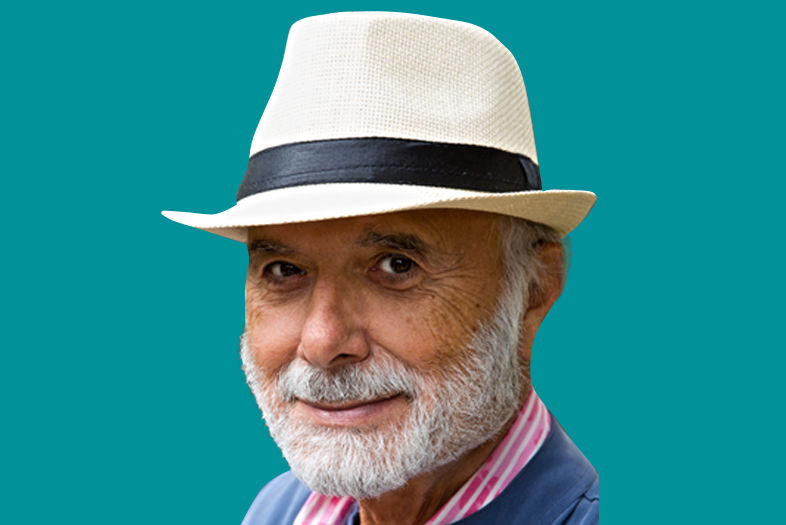
Meet the Globetrotters and Expats Shaping San Diego
Photo by Lauren Tabak
Sami Ladeki
Founder, Sammy’s Woodfired Pizza and Pisco Rotisserie & Cevicheria
Birthplace: Beirut, Lebanon
Lives in: La Jolla
Age: 74
La Jolla restaurateur Sami Ladeki grew up traveling with his dad, who rated hotels for the tourism ministry. At 20, he left Lebanon for Germany to study political science, but he ended up in a hotel and restaurant management program instead. He began his career in London and Bermuda, and also lived in Cairo, Berlin, New Orleans, Las Vegas, and San Francisco—plus about a half dozen other cities. “Out of them all, San Diego is my favorite. San Diego, especially La Jolla, was where I experienced my greatest success,” he recalls. He opened his first Sammy’s Woodfired Pizza in La Jolla in 1989 and went on to open 13 more, as well as Roppongi, Fresh, Tamarindo, Prime 10 Steakhouse, and Hotel Parisi. His eponymous pizza empire has lasted for 30 years and his travels continue to inspire his menus. His latest venture is Peruvian cuisine—he opened Pisco in Liberty Station last summer and expanded it to Carlsbad in January. But not everything in San Diego is 72 and sunny. “San Diego lacks in its outdoor, pedestrian lifestyle. The leaders of San Diego should support sidewalk cafés like you see in San Francisco and New York City. Outdoor areas are part of the culture, and there’s no better way to meet people and bring community together.”
Loyalty points:
“Even in my second life, I will live in San Diego.”
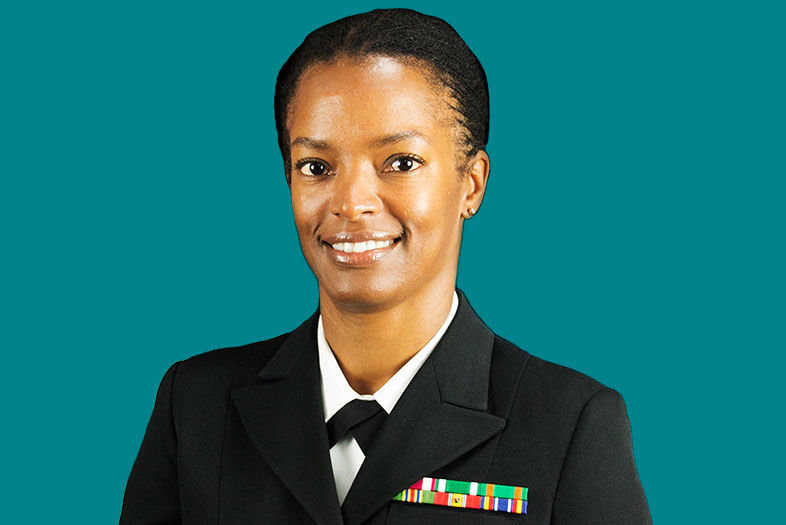
Meet the Globetrotters and Expats Shaping San Diego
Lynelle M. Boamah, MD
Captain, United States Navy Medical Corps
Birthplace: Baltimore, Maryland
Lives in: Scripps Ranch
Age: 49
Captain Lynelle M. Boamah’s 23 years in the Navy have taken her all over the world. This year alone she has sailed to Indonesia, Malaysia, Sri Lanka, and Vietnam aboard the USNS Mercy as part of the Navy’s annual Pacific Partnership deployment. On these missions, the medical, nursing, and dental professionals of the San Diego–based hospital ship spend about two weeks in each host nation, working alongside their counterparts to see patients together. They also exchange best practices in medicine and surgery and teach CPR to civilians.
Boamah serves as the executive officer of the ship. A mother of four kids age 8 to 18, she is board certified in general pediatrics and pediatric gastroenterology and has multiple teaching awards and medals. But it’s working with patients that gives her lasting memories. “The experiences on the Mercy that always affect me personally are when we provide eyeglasses to people who have had vision problems all of their lives but did not have the means or resources for glasses. When a husband can see his wife’s face clearly or a grandmother can see her grandchildren—these are a real tearjerker!”
Home sweet home:
“My travels to the Indo-Asia-Pacific region have enhanced my appreciation for the comforts of home. I also appreciate the military culture within San Diego. In my experience, San Diego is very supportive of military members and families. We should continue to stand in support of our great Navy and Marine Corps and welcome people from other nations and cultures as they seek a new life for themselves and their families.”
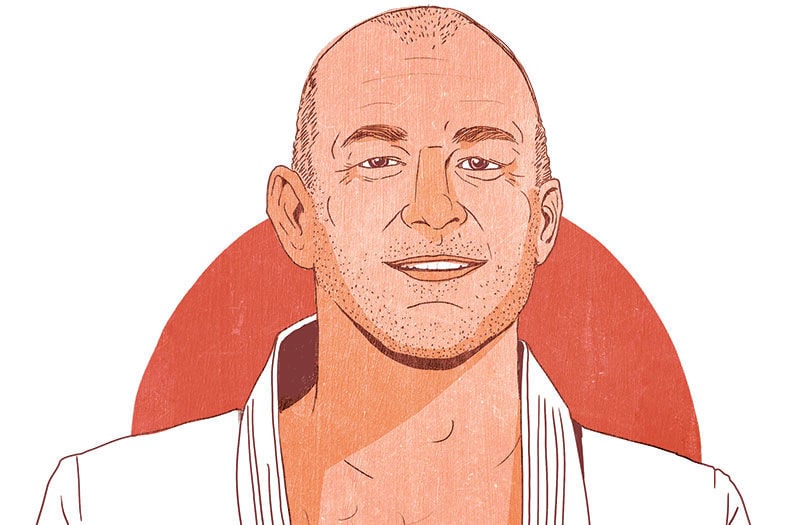
Meet the Globetrotters and Expats Shaping San Diego
Illustration by Michael Hirshon
Rodrigo Medeiros
Owner, Brazilian Jiu Jitsu San Diego Academy
Birthplace: Rio de Janeiro
Lives in: Pacific Beach
Age: 48
In 1996, young jiu-jitsu fighter Rodrigo Medeiros left his native Rio de Janeiro with $800 in contest winnings. The protégé of the legendary Carlson Gracie, he taught in Los Angeles for a couple of years before landing briefly in La Jolla. He opened his Brazilian Jiu Jitsu Academy at Pacific Beach Fight Center in 2000 and was the International Masters middleweight champion the next year. Medeiros has trained 1,000 students and 200 national and world champions here, and in 18 years he has left San Diego only to open a gym and teach in Hong Kong from 2012 to 2016.
Considering the growing popularity of jiu-jitsu worldwide, he could opt for a bigger venue than San Diego. He’s not about to trade it in, though, saying, “I think the lifestyle and quality of life you have is more important, as opposed to the money you make.” The fourth-degree black belt and lifelong surfer cites San Diego’s waves as a major factor in selecting his base of operations. On a typical five-minute drive from home to his Cass Street gym, he passes people running, biking, walking, and skateboarding. San Diegans love to be outside; the city is like Rio in that respect. “You have the beach, the social life, a lot of good gyms, young people,” he says.
On three continents, and in three very different cultures, “I learned overall we’re all the same. All people in the world look for happiness. Everybody has love inside their hearts. Every place has good and bad people, it doesn’t matter what religion or color you are.”
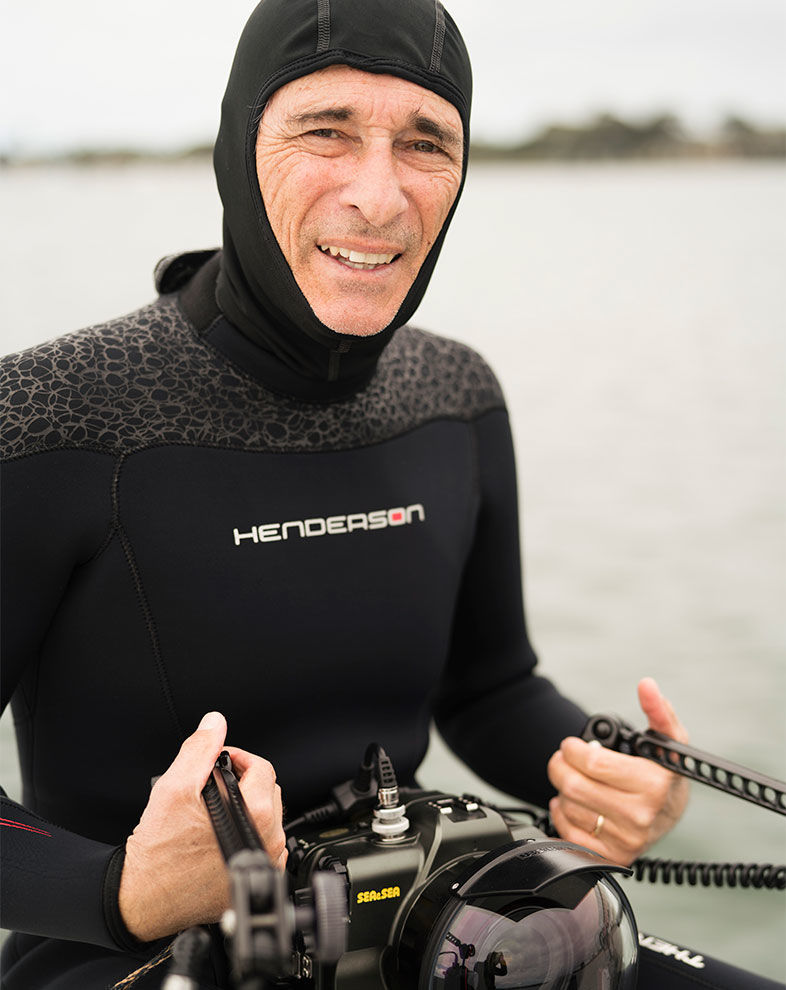
Meet the Globetrotters and Expats Shaping San Diego
Photo by Jay Reilly
Richard Hermann
Photographer
Birthplace: Lyon, France
Lives in: Poway
Age: 64
Born in France and raised on the Monterey County coast, Richard Hermann was transfixed by marine life ever since childhood. In 1990, after 10 years of working as a dive instructor in the Bahamas and Guadeloupe, and assisting marine biologists off San Onofre, he got his first photography assignment: joining Jacques Cousteau on a shoot in the Philippines.
The ensuing decades took him to New Guinea, Hawai‘i, the Bahamas, the Azores, Greece, Turkey, and Mexico’s remote Revillagigedo Islands. Hermann worked as a technical diver on two underwater Imax films, Deep Sea 3D and Under the Sea 3D, and shot still photos on the highest budget nature film of all time, Disney’s Oceans.
His most impressive calling card, though, is pioneering images of blue whales that were shot in the Sea of Cortez and off San Diego’s Nine-Mile Bank. Skill with a camera is one thing, but Hermann says that weather patterns, his knowledge of the ocean, and an extensive network of fishermen and scientists makes the difference between getting the shot and getting squat. “You might need only a minute of blue whale footage, but it could take three weeks,” he says.
Hermann, who’s fluent in French and German, moved to San Diego in 1976, mostly because of the area’s natural beauty. Now living in Poway, he still loves it for that reason. “You can swim in the cove in the morning, be in the snow in the mountains at noon, then the beautiful desert all in the same day,” he says. “For a nature person, there’s nothing better.”
San Diego is mostly the same beautiful place he found in the ’70s, with the exception of rising homelessness. “That’s the thing I really notice lately.”
Recalling his French roots, Hermann finds San Diegans gregarious in comparison. “People are easier to get to know. If you go to a barbecue where you don’t know people, you can always find someone you have things in common with.”
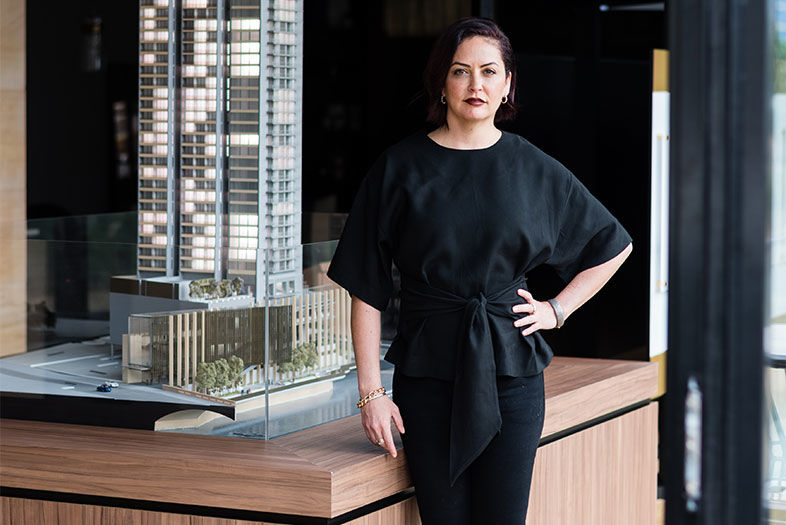
Meet the Globetrotters and Expats Shaping San Diego
Photo by Phu Tang
Lorena Gaxiola
Founder and Owner, Lorena Gaxiola
Birthplace: Tijuana
Lives in: Sydney and San Diego
Age: 43
Though she has a Mexican passport, Lorena Gaxiola tells people she’s “a citizen of Qantas Airlines.” She splits her time between her San Diegan clients and her husband, daughter, and business headquarters in Sydney. For Gaxiola, jumping on a 15-hour flight from Australia for a five-day trip is “as easy as taking the bus.”
She’s used to it. For five years, Gaxiola spent every other month in China, mostly in Nanjing, designing luxury homes. She attended Design Institute of San Diego, but sought a creative outlet beyond what our city could offer. “I wish San Diego was more out there when it comes to design and architecture. That’s the reason I went to Sydney—it allowed me to be very creative,” she says, pointing out that while San Diego’s culinary scene has seen a design awakening, its hotels have yet to catch up. “The people building and investing should allow creative people like me to have a voice and let us think outside the box. Just like technology, design and architecture should progress as well.”
Even though she hangs her hat most of the year in Oz, she feels at home whenever she hits the tarmac here. “In Sydney there’s 5 million people; you don’t even realize you’re stressed out. When I come to San Diego I feel so relaxed. I go to the beach and it just feels like paradise.”
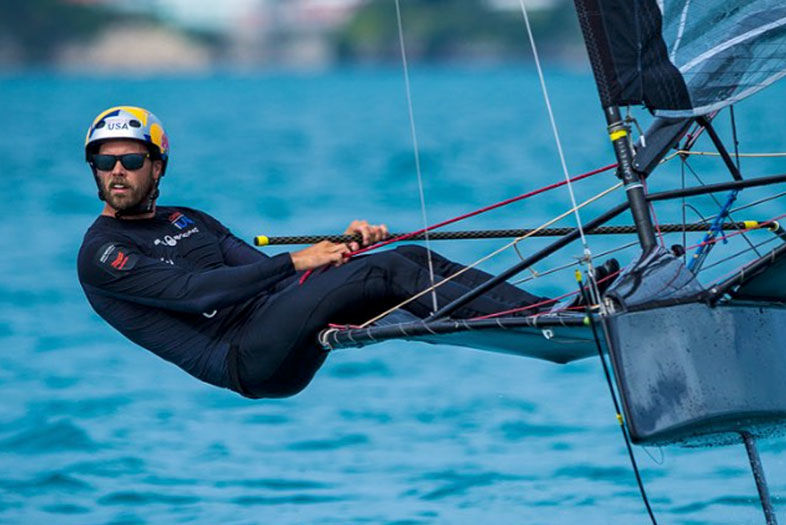
Meet the Globetrotters and Expats Shaping San Diego
Andrew Campbell
Professional Sailor
Birthplace: Toms River, New Jersey
Lives in: North Park
Age: 34
Sailboat racing can blur the line between work and pleasure. It’s a bit of both when you train for the America’s Cup in Bermuda, as longtime San Diegan Andrew Campbell did from 2015 to 2017. Campbell and company lost the cup to Emirates Team New Zealand, but he and his wife returned to San Diego with a pair of twins, born on the island. Up next, the family will soon move to Rhode Island, to try to win back the cup in 2021.
Campbell, whose father was an America’s Cup sailor as well, relocated to San Diego at age 8. He showed up days late for college at Georgetown University with a bag full of dirty laundry from competing in Greece. In pursuit of the cup, an Olympic medal in Laser-class sailing, and other victories, Campbell has set sail in China, Korea, Australia, New Zealand, Brazil, Chile, and nearly every coastal corner of the United States, Canada, and Europe.
In northern Germany, he once found himself without accommodations and no internet to help him find some. With sailing as his only common language, he procured some gracious hosts. “It’s like, ‘You’ll stay with us; it’s not a question of how or how much.’ It ends up being an incredible friendship without words.”
San Diegans might find our city easily navigable, but when Campbell sees a soul looking a bit lost around the yacht club or elsewhere, he lends a hand. “I learned the value of that when I was doing a lot of Olympic traveling.”
On dry land, Campbell’s North Park home is a base for cycling tours up Mount Soledad and Mount Helix, or along the spine of Point Loma. “On my way home, I can get any variety of meal you could imagine. That’s something special about America and San Diego specifically,” he says. “The openness of our neighborhoods is really cool—being able to pass through and have people smile at you.”
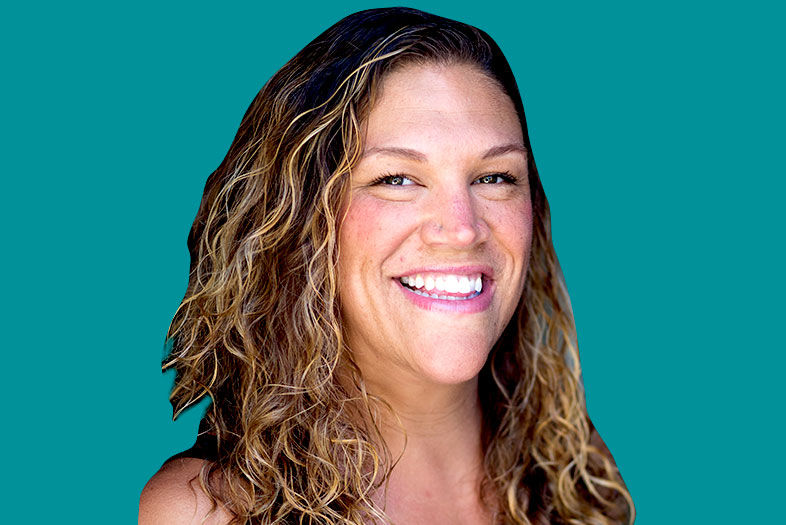
Meet the Globetrotters and Expats Shaping San Diego
Photo by Christina Gandolfo
Kyle Moss
Program Manager and Head of Global Entrepreneurship, Qualcomm Wireless Reach
Birthplace: Lockport, New York
Lives in: Del Sur
Age: 35
On one of her first trips for Wireless Reach, a Qualcomm initiative bringing wireless technology to developing nations, Kyle Moss traveled to rural Indonesia. No hotel in sight, she stayed with a host family who insisted she use their shower—a bucket-and-basin affair. Moss scooped water and poured it onto herself a few times. “Then I peered in to take a closer look at its source,” she says. “Lo and behold, a big scaly face stared back at me: an incredibly large catfish whose home I had been diminishing with each scoop.”
The job has also taken Moss to Senegal, Nigeria, South Africa, Japan, Korea, Malaysia, the Philippines, and parts of Europe. By partnering with nonprofits and government agencies, Wireless Reach puts the company’s wireless tech into the hands of mothers, schoolchildren, fishermen, and others in developing nations. It has allowed midwives to track the health of expectant mothers in India, given solar-powered tablets to students in Kenya, and helped fishermen get their catch more safely in Senegal.
The travel perks are good, but when it comes to calling somewhere “home,” give her San Diego’s coastline, wine regions, manageable downtown, and stellar educational institutions any day of the week. “It’s rare to find any other place that offers as many perks as San Diego does, paired with the joyful people and healthy-minded atmosphere.”
Beyond that, Moss is proud that her city resettles so many immigrants. “I’d love to see all our neighborhoods become more ethnically diverse. Being from a mixed-race family and now raising one of my own makes me desire that multiplicity wherever I go, not just in certain pockets.”
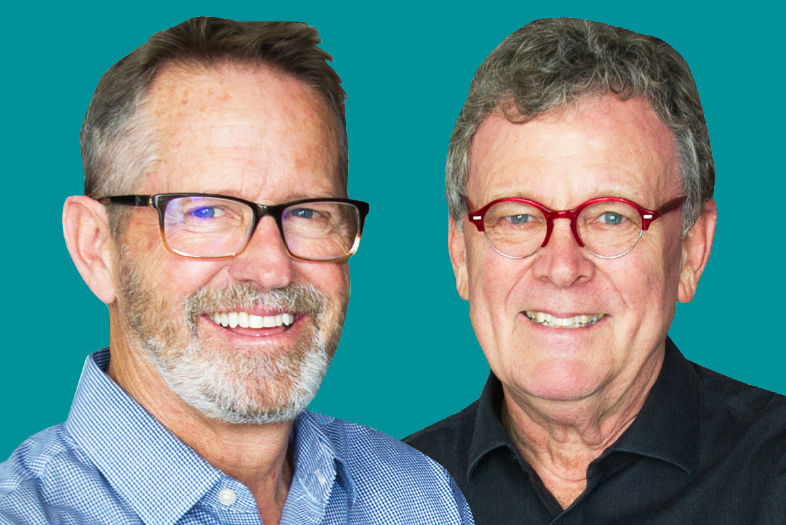
Meet the Globetrotters and Expats Shaping San Diego
Photo by Lauren Radack
Douglas H. Austin
Chairman & CEO, AVRP Skyport
Birthplace: San Diego
Lives in: Del Mar
Age: 69
Frank Wolden
Principal, AVRP Skyport
Birthplace: San Diego
Lives in: Little Italy
Age: 67
Believe it or not, San Diego’s look has a Canadian influence. “Vancouver is a city with strong vision, and it’s respected throughout the world,” explains Douglas Austin, an architect and San Diego native. “It was Canadian architects who first saw promise in living downtown. They couldn’t believe we weren’t taking advantage of our waterfront. I think most San Diego developers weren’t getting it.”
That’s why the first developments, those two-story townhomes built in the early 1980s, were very suburban, says Frank Wolden. “We always used to joke back then that San Diego housing developers carried the ladder in the back of their pickup truck.”
Between them, Wolden and Austin have worked in Kuwait, Indonesia, China, the UAE, Mexico, Poland, England, Egypt, Guam, Costa Rica, India, and Ghana. “You have to see the world to do this stuff,” Wolden says. One local project they’re working on now is redesigning downtown’s Seaport Village for Protea Waterfront Development. It’s a $1.2 billion undertaking and it will be at least four to seven years before it opens. First order of business is removing the barriers. “Seaport Village is completely separate from the city,” Wolden says. “What you see from the city is trees and parking lots. It’s hard to get to the water. We’re going to actually connect the city to the waterfront.” In fact, more than 70 percent of the site will be public space—that includes parks, European-like “narrow streets of exploration,” and places where you can touch the water. In partnership with UC San Diego and Birch Aquarium, there will be a learning center, aquarium, school, marketplace on the water, and more. The new village will be oriented around having multiple experiences, not just retail. “It’s about life,” Wolden says. “It’s not about shopping.”
Sometimes moving forward means looking back. “It’s a little bit of a reverse story,” Wolden says. “The things you can learn from around the world, a lot of times, are the old things that people used to do. For the seaport, we used a lot of analogies to famous places like the Barcelona Rambla or the Piazza del Campo in Siena. The kinds of things in European streets that are pedestrian oriented. We’re trying to implement those lessons in Seaport Village.”

Meet the Globetrotters and Expats Shaping San Diego
Illustration by Michael Hirshon
Margaret Leinen
Director of Scripps Institution of Oceanography
Birthplace: Chicago
Lives in: Mission Hills
Age: 71
As a paleoclimatology researcher and science envoy for the US State Department, Leinen has been virtually everywhere—on land and sea. She’s visited most of the world’s nations, setting foot on all seven continents, a dizzying array of Pacific islands, and the South Pole. That doesn’t even cover her time crisscrossing the world’s oceans, on the surface and the seafloor, where she’s ventured as deep as 13,000 feet and once discovered undersea hydrothermal vents 250 miles off the Washington coast.
Leinen moved here just four years ago after living in Illinois, Oregon, Florida, and Washington, DC. She loves how her new city and its neighborhoods, like her own Mission Hills, unify the region while maintaining their character. “Mission Hills is totally different from Pacific Beach or Barrio Logan or La Jolla.” It’s diverse compared to her native Chicago, she says.
Leinen was recently in a ride-sharing car headed to the airport for a morning flight. She asked her driver who else needed a ride so early before dawn. The driver said he started his shifts at midnight, often picking up chefs at the border who were bound for San Diego kitchens to prepare for breakfast. “San Diego is a border town that lives with its border very easily,” she says. “We kind of take that for granted.”
From her office at Scripps, she can watch as surfers and fishermen feast on San Diego’s spoils. “People here are really engaged in being in their environment. On the trail, people are out and about. You look at the bay, it’s full of boaters.”
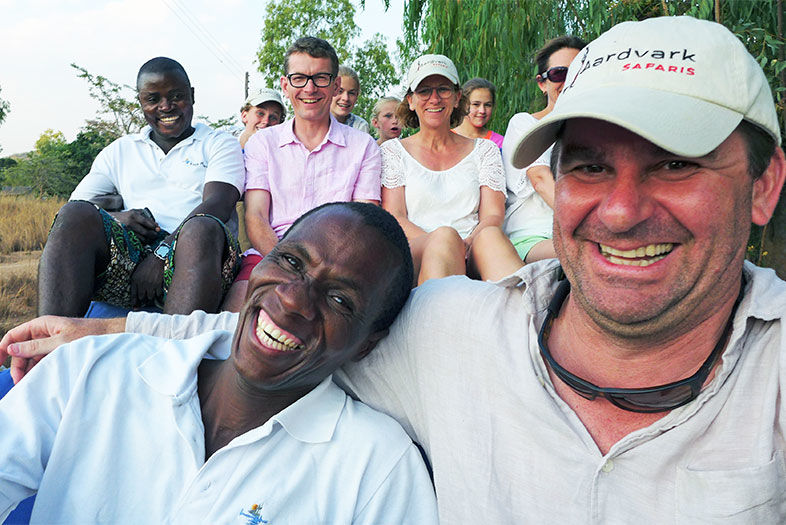
Meet the Globetrotters and Expats Shaping San Diego
John Spence
President, Scott Dunn USA
Birthplace: Lambourn, England
Lives in: Solana Beach
Age: 49
“I was born on my parents’ farm near Oxford. I’m a bit of an English hillbilly I guess,” says John Spence, who is anything but by American standards. In 1991 he bought a one-way ticket to South Africa, and ended up a cocktail barman in Cape Town for six months during the end of apartheid. Next, he trained to be a white-water rafting guide on the Zambezi, a grade 5 river (the second most dangerous kind) that he describes as “awfully terrifying.” On his days off, he would go out in the bush with his safari guide friends and look for elephants, birds, and leopards. That’s when he fell in love with Africa and got into the safari travel business.
“I was in the middle of the Serengeti, surrounded by lions and wildebeest, when I met a man from what I thought was called ‘La JOH-lah.’” That safari guest ended up investing in Spence’s business, Aardvark Safaris. Spence traveled to San Diego from England once a year for 10 years to make presentations to potential customers. “To have somewhere the size of San Diego and not have one safari specialist was like being the only male at an orgy,” he jokes of his early success. “Americans are really good networkers; if they like you, they really support you. That was very different to the UK. When I was turning 40 and having my second or third midlife crisis, I thought, world domination has to have America in it.” That’s when he decided to move to this “very wealthy backwater of America—and it’s not a bad place to live, either.” He ran Aardvark Safaris for 25 years, traveling to Africa up to six times a year, until he sold to Scott Dunn in 2016, where he is now president.
Culture shocked:
“I’ve lived all over—Switzerland, France, England, Zimbabwe, South Africa—and I’ve found San Diego the most foreign place I’ve ever lived, even though I have the language in common. I still really struggle. Getting in a car to get a pint of milk does my head in.”
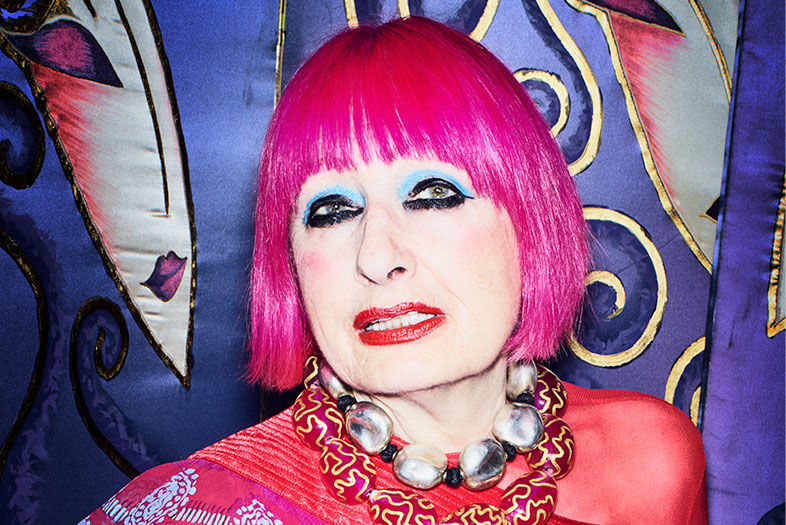
Meet the Globetrotters and Expats Shaping San Diego
Photo by Simon Emmett
Dame Zandra Rhodes
Fashion Designer
Birthplace: Kent, England
Lives in: Del Mar
Age: 77
Not many people can say they’ve designed clothes for both rock royalty and actual royalty. Zandra Rhodes once made dresses for Princess Diana. “I used to go to the palace to fit her,” she says. “It’s very formal. I’d curtsy when I went in. She was lovely, delightful.”
Rhodes studied art and printed textile design in Kent and London and opened her first shop on Fulham Road in 1967. A few years later she brought her work to New York. After Diana Vreeland put her designs in Vogue, she was picked up by Henri Bendel, Neiman Marcus, and Saks. She has designed for everyone from Jackie Onassis and Elizabeth Taylor to Freddie Mercury and Kylie Minogue. Her clothes have been seen on Sarah Jessica Parker on Sex and the City and on Helen Mirren, Kate Moss, and Ashley Olsen.
She landed in Del Mar 22 years ago when her partner, then-president of Warner Brothers, wanted to retire by the ocean and spend time at the races. Rhodes is not a fan of horse racing or the short skirts you see on women in the clubhouse. “But I don’t think we should pick on the racetrack, because there are some elegant people in San Diego who dress up beautifully. I mean, we’re not in the sticks.”
She has created costumes for the San Diego Opera and continues to design, shuttling back and forth between London and San Diego about a dozen times a year. In addition to launching collections and collaborating with other designers (search for her name and, among other items, you’ll find a Valentino men’s swim short with her print selling for $600 on mrporter.com), she opened the Fashion and Textile Museum in London in 2003, and will celebrate the fiftieth anniversary of her label in October 2019 with an exhibition and a book.
As for the signature pink hair? In 1970s London, she explains, people were experimenting with colored wigs, and her green wig pinched her head. “I thought, ‘You know what? Hair must be a bit like a sheep. Why don’t we dye our hair?’” But the dyes came out. Then she went to China in 1980. “They were still in army uniforms and no one wore makeup and it was the middle of winter.” She came back thinking about “Red China” and decided to dye her hair pink, “the nearest thing to red. The pink was permanent, easy to keep, and I don’t wish to go gray.”
With hono(u)rs:
In addition to becoming a dame commander, Order of the British Empire, Zandra (Z for short) holds nine honorary doctorates at universities in the US and UK.
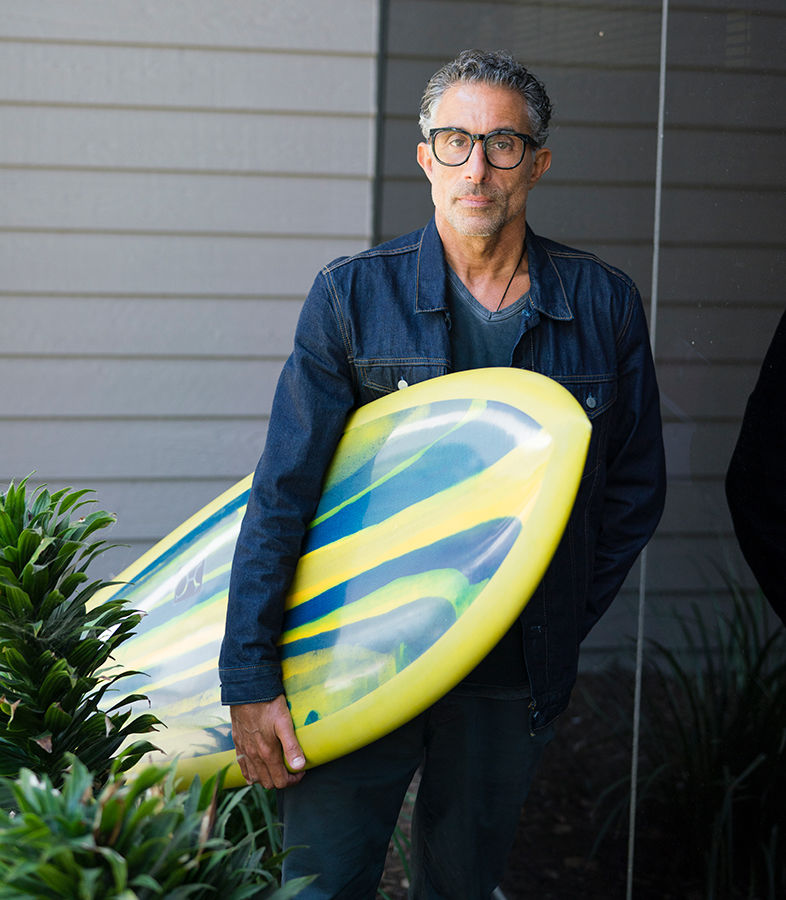
Meet the Globetrotters and Expats Shaping San Diego
Photo by Jay Reilly
Mark Price
CEO, Firewire Surfboards
Birthplace: Durban, South Africa
Lives in: Solana Beach
Age: 56
In retrospect, Mark Price seemed destined for a career in the surf industry. He was a professional surfer in the early 1980s, and he once embarked on a string of marketing posts for surf brands Gotcha, Rip Curl, and Reef Footwear. But his biggest break came in 2006, when he accepted an offer to helm a little-known startup called Firewire Surfboards. Under his leadership as CEO, the company has evolved into one of the most recognizable and innovative names in surf, pioneering the use of eco-friendly materials and manufacturing techniques for surfboards. Price’s environmental bent—see Firewire’s algae-based traction pad and pledge to produce zero waste by 2020—formed while he was living in South Africa, Australia, France, Hawai‘i, and Solana Beach.
“I believe that humankind is at war with nature, and if we don’t change how we consume the goods and services that make up our daily lives, I know who’s going to win, and it won’t be pretty,” he says. “While progress is being made, I’d like to see San Diego become a notable beacon of ever-increasing sustainability and a case study for other cities.”
As a well-traveled surfer who still rips on his company’s own boards, Price is surely tempted to make his home somewhere closer to one of his favorite waves—South Africa’s Jeffreys Bay, perhaps. But it’s the “big-city vibe in a small package” that keeps him here. And it’s “the weather, multicultural influences, eclectic neighborhoods, and combination of city-meets-the-beach, all within a relatively short distance of each other” that keep him occupied.
What irks him? “Those damn 40-foot RVs taking up all the parking spaces at my local surf spot, even though none of them surf. However, if I score a parking space I’m grateful to them for keeping the crowds down.”
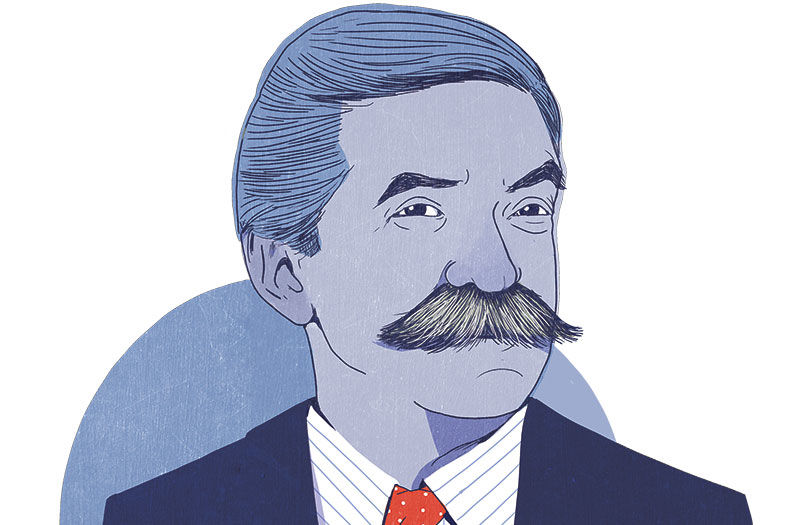
Meet the Globetrotters and Expats Shaping San Diego
Illustration by Michael Hirshon
Jaime Alonso Gómez
Dean, University of San Diego School of Business
Birthplace: Coahuila, Mexico
Lives in: Scripps Ranch
Age: 61
In Latin America, grabbing a coffee and getting to know someone personally is a prerequisite to doing business. (Whereas Americans like to get to the point.) Businesspeople have to understand these cultural differences anywhere they work. And after researching, teaching, and consulting in 55 countries, Gómez is a prominent expert in multicultural communication. As dean, he still has time to teach courses like Leadership and Culture in a Global Context to high-level executives. A believer in business models with social good baked in, he preaches his own five-point bottom line: people, planet, profit, peace, and prosperity. There’s a reason the Mexican native with a worn passport chooses to remain where he raised his sons, a doctor and a sound engineer, both of whom earned graduate degrees locally. “San Diego is a great place to build your life, because the community here is collaborative and deeply cares about making this city and the world a better place,” he says.
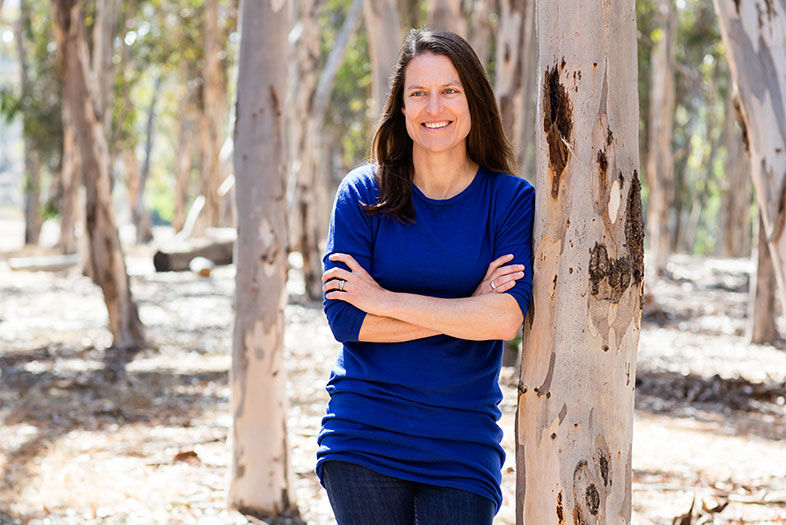
Meet the Globetrotters and Expats Shaping San Diego
Photo by Jenny Siegwart
Jennifer Burney
Assistant Professor, UC San Diego School of Global Policy and Strategy
Birthplace: Albuquerque, New Mexico
Lives in: La Jolla
Age: 41
After earning a bachelor’s from Harvard and a PhD in physics from Stanford, this self-described “child of the mountains” found that environmental science was the way to stay outside. For the last decade, Jennifer Burney’s main laboratories for studying food security and climate change have been the African nation of Benin—where she lived for one year—and northeastern Brazil.
No matter how many lines of latitude or longitude you cross, she says, “scientific curiosity brings people together.” Even in rural West Africa, she recalls tuning in to a broadcast about international climate negotiations. “Local pastoralists were talking about how important it is.”
Burney was named a National Geographic Emerging Explorer in 2011, and when she landed a teaching gig at UCSD, it felt like “winning the lottery”—not only because of the school’s prestige, but because living here would afford her outings to the Anza-Borrego desert, mountain bike rides at Mount Laguna, and all the other benefits of the multifaceted city that she says “feels like a well-kept secret. It’s not easily characterized in one line. You have a bunch of different communities that are diverse in many ways.”
Kind of a big deal:
The National Science Foundation awarded Burney a four-year, $1.5 million grant to study how climate change and pollution impact agricultural production. She has also coauthored two papers on the impacts of air pollution, both forthcoming in Nature this year.
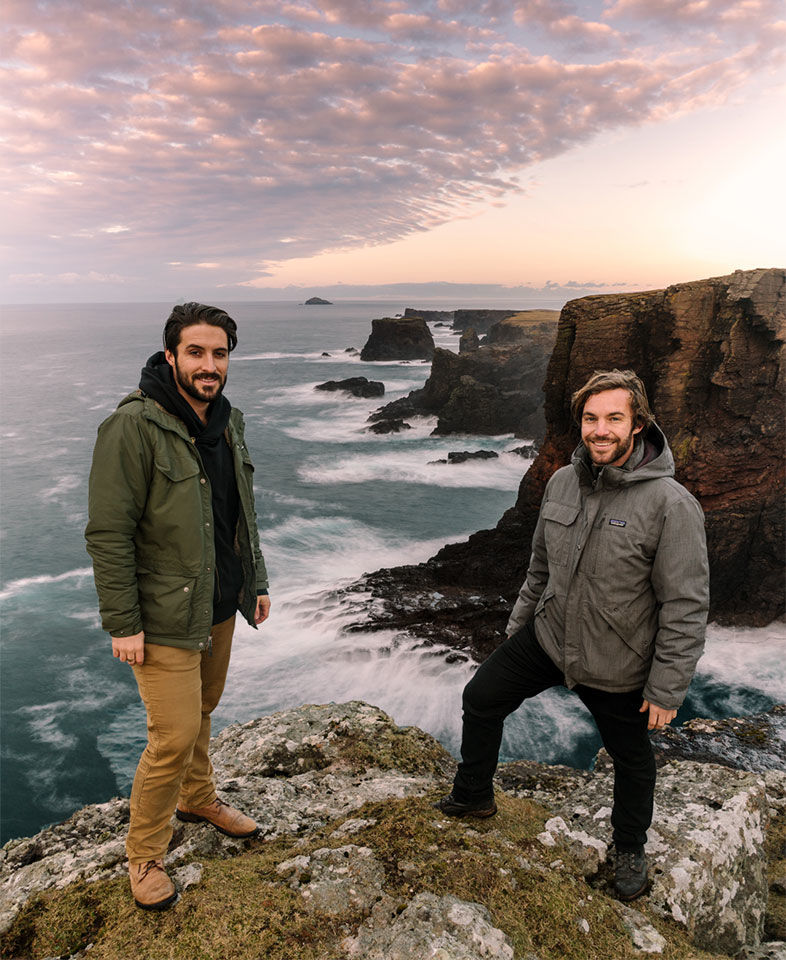
Meet the Globetrotters and Expats Shaping San Diego
Photo by Alex Ayling
Alex and Marko Ayling
Cocreators, Vagabrothers
Birthplace: San Diego
Live in: Los Angeles
Ages: 30 and 32
Their parents were a Kiwi and a flight attendant who met on a train in Switzerland. (She was lost; he had a map.) So Alex and Marko Ayling, a pair of brothers who grew up in Mission Hills, were destined to travel. And they have: visiting around 70 countries, 50 of which were destinations in their 671,000-subscriber-deep YouTube travel channel, Vagabrothers. Now living in Los Angeles, they introduce themselves to the world as a couple of guys from San Diego.
“If two San Diegans met anywhere in the world—they could be on the Mongolian steppe—they’d start arguing over their favorite burrito spot,” says Marko. (For their money, the brothers back El Cuervo in Hillcrest.)
Of every place they’ve seen, San Diego still ranks highly. “It has the best balance of lifestyle in the world, especially North County,” Alex says. “You can surf, go for a bike ride, grab a smoothie, eat a great lunch with craft beer, and then hit up a reggae show at Belly Up.”
San Diegans are fortunate to share the border with Tijuana, Marko says. “There’s such a rich melting pot of cultures in your own backyard. To grow up so close to another language and culture and be able to cross over—it’s a gift.”
But the brothers know their hometown has some decisions to make about growth. They point to Mission Valley as an example of what not to do. “There’s still time to avoid some mistakes LA made in terms of spreading too far,” Marko says, arguing that San Diego ought to take notes from Denmark and the Netherlands for developing bicycling infrastructure, like bike parking garages and separate lanes to keep cyclists safe from cars.
“San Diego is such a great city for biking,” Alex adds. “Investing more in green transportation options, whether it’s eco-friendly trolley lines linking the city, or bike paths—that’s the way to move forward.”
On motorcycle and on foot, the brothers love to head east to Julian, Ramona, and Mount Laguna. “There’s some cool mountains out there, vineyards, apple pie,” Alex says. “We live in such an amazing city in an amazing corner of the world. I’d encourage San Diegans to explore their hometown more.”
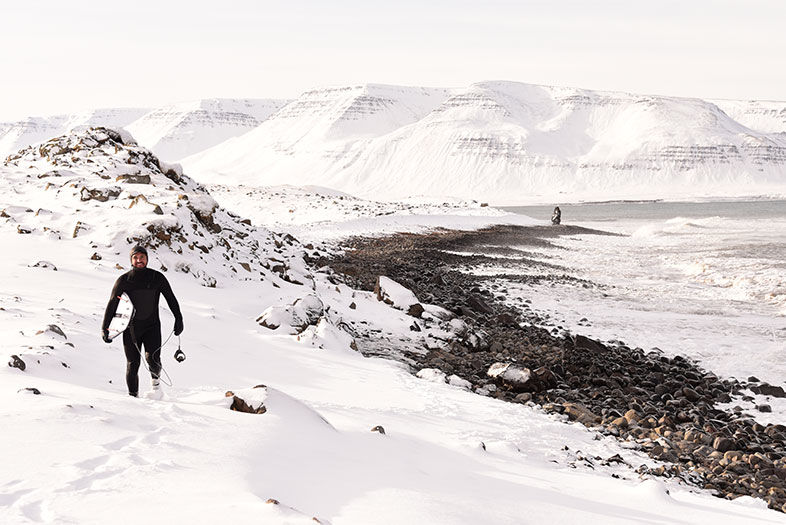
Meet the Globetrotters and Expats Shaping San Diego
Juan Carlos Bonilla Uribe
CEO and Architect, Matraca Real Estate Solutions and Kom Studio
Birthplace: Mexico City
Lives in: Cortez Hill
Age: 32
“You want to go snowboarding, you have Big Bear. You want to go to a major city, you have LA. Wine tasting? Valle Guadalupe. You have everything within a really short radius.”
That’s how this Mexico City native feels about his adopted home, living with his wife and dog in Cortez Hill. In Mexico City, he says, “You live every minute of your life in rush mode. Here you can take that moment to enjoy going surfing, walking to your job, walking to the park.” The recreational surfer and triathlete believes that San Diego gives you breathing room, yet still allows you to develop your career in virtually any field. “There’s no other place you can find that.”
The architect and real estate developer in him, however, sees potential for something more. After studying in Mexico City, Australia’s Gold Coast, Paris, and São Paulo, Uribe moved here in 2015 to expand his family architecture and design businesses, pursuing projects on both sides of the US-Mexico border—mostly turnkey private home development. He sees Tijuana becoming a model for the kinds of live-work communities that will dominate future cities. San Diego, not so much.
“Tijuana, Mexico City, São Paulo, Sydney—they want to innovate. They’re creating a cool style of architecture that’s their own. Here, it’s still restrained. Architecture and design are far behind,” he says, adding that when you’re in a restaurant or hotel in LA or New York, you know it, whereas San Diego lacks a defining style.
What does it need? “A big art movement would be really interesting.”
Ice, ice, baby!
Uribe recently added a new pin to his travel map: Iceland, where he ventured with his wife and sister to a few of the world’s coldest surf spots. Ten days of long drives and harsh weather yielded just a few small windows of good surf conditions at three different beaches. Uribe’s wife and sister snapped photos of him on the icy waves while a surf guide flew a drone, all to capture material they plan to use for a documentary film about the trip.
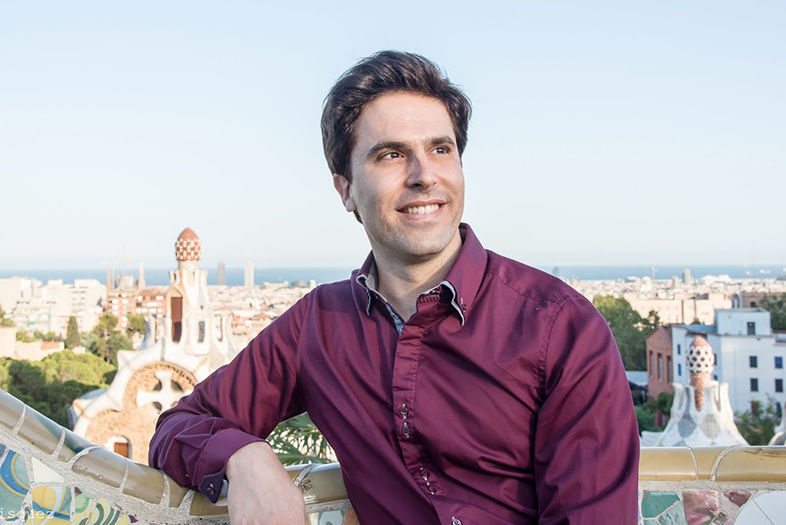
Meet the Globetrotters and Expats Shaping San Diego
Raúl Prieto Ramírez
San Diego Civic Organist and Artistic Director, Spreckels Organ Society
Birthplace: Southern Spain
Lives in: University City
Some may not know it, but San Diego is one of only two cities in the US with a designated civic pipe organist. Raúl Prieto Ramírez assumed the role last December; he will play at least 44 free concerts per year at Balboa Park’s Spreckels Organ Pavilion and curate the annual International Summer Organ Festival (Monday evenings, now through September 3). The century-old Spreckels Organ is the largest outdoor pipe organ in the world, but the way young Ramírez plays is anything but old-fashioned—he’s hailed for his lightning-fast footwork and electrifying stage presence.
“Since the first time I came to San Diego to perform I felt like I belonged,” he says. “I really love how the beautiful environment and weather has shaped San Diegans with an attitude of enjoyment that, as a Mediterranean guy myself, feels like the right way to live.” He also notices that San Diegans love their animals. “I grew up with dogs, so I enjoy seeing so many citizens here spending their time with their dogs.”
One area where we’re lacking, he believes, is efficient and affordable public transportation, because the number of potential riders per square mile is higher even than some European cities that do have it. “I’m ready to trade most of my outrageous car expenses for better public transportation. That’s quality of life.”
Ramírez is also the founder and artistic director of the Barcelona-Mataró International Organ Festival. “I travel to share music with people,” he says, “and because music is a language common to all human beings, it makes our equality very evident. Isn’t that beautiful?”
We’ll drink to that:
“I laugh at my friends’ faces when I tell them a glass of fine wine in my hometown costs from 2,5€ to 5€ maximum.” (That’s about $3 to $6 US.) “And it comes with a free tapa!”
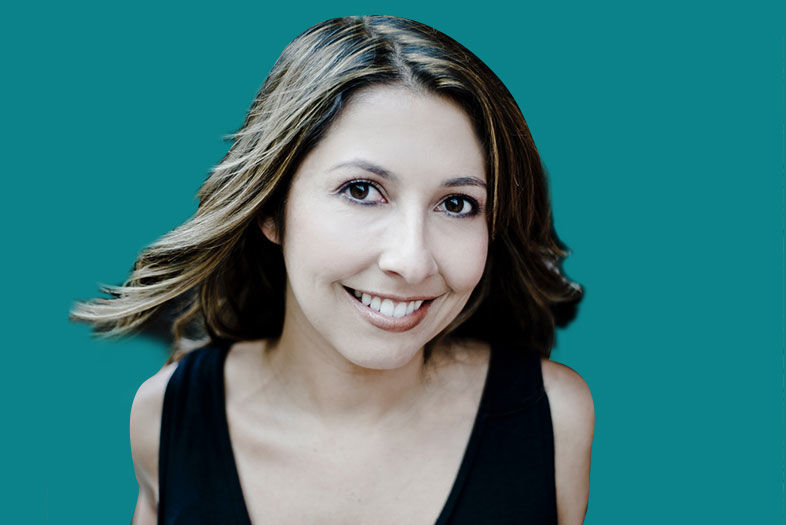
Meet the Globetrotters and Expats Shaping San Diego
Michelle Martin
Founder and CEO, Travaraâ
Birthplace: Durango, Mexico
Lives in: Santaluz
Age: 39
A trip to Poland at age 19 changed everything for Martin, who blogs about travel and social impact for forbes.com. “I volunteered at a summer camp for kids with cancer—they came from a region of Poland that was so heavily polluted that 85 percent of people had cancer,” she remembers. “The children would spend their summer in the clean mountain air, having chemo treatments in between hikes and picking blueberries.”
In 2008, she created the nonprofit Karuna International to take underserved youth from Barrio Logan abroad for the first time. She has also worked at Qualcomm Wireless Reach, which brings smartphone technology to remote areas of the world. The job took her to rural villages in Morocco, India, Myanmar, Colombia, Senegal, and to remote areas of Ghana and the favelas of Brazil.
“San Diego does a lot of things right when it comes to the tourism and hospitality industries, but I would love to see more mission-driven, for-profit companies working in the social good space.” She cites local creative agencies like thinkPARALLAX, which sponsors employee trips to global destinations of their choice.
“We take for granted things like basic infrastructure, access to education and health care, and public safety. I was born in Mexico but my parents raised me here. I’m privileged to raise my children in a city like San Diego, but they’ve both had passports since they were babies. The best gift I can ever give them is the opportunity to see what life is like for people around the world.”
Her current venture:
PARTNER CONTENT
Launched last month, Travara is a media platform aimed at socially conscious travelers. A percentage of its ad revenue will help take underserved youth abroad and create jobs for women in developing countries.









